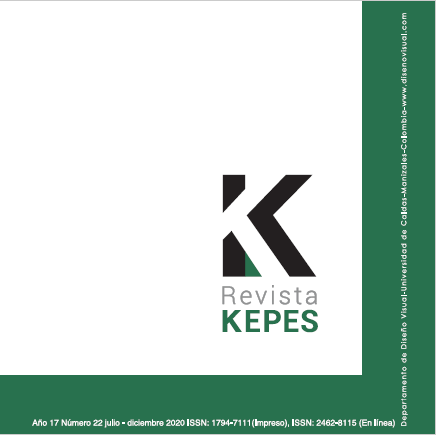Authors
Abstract
This article gives an account of the research developed on the process of experimentation and creation with animation that students of the Department of Visual Arts of the Faculty of Arts at Universidad de Antioquia carried out between 2000 and 2010. This inquiry is part of the research La Animación en Colombia 1990-2010, led by Universidad Jorge Tadeo Lozano in Bogotá and in which the Hipertrópico Research Group of Universidad de Antioquia looked into and analyzed the status of animation in Antioquia. Although the national research aims to establish a diagnosis of the animated image since the arrival of digital media in Colombia, this text responds to the particular analysis of the creative processes developed with animation in the School of Arts of Universidad de Antioquia during this period. The methodology of this analysis is qualitative and hermeneutical, as it combines reflection on the artistic processes that make up animation, considers the interaction between students and professors in the light of the use of digital media, and inductively examines artistic creations with animation to propose an aesthetic and conceptual positioning on the ways in which the animated image was integrated into artistic processes. As a result, the research proposes three categories: convergence of means by expressive necessity, resourcefulness to work the moving image, and interest in the media of animation as a language of expression. In these categories, it is evident how the students discovered, experimented and proposed creations with or from animation. It is concluded from this research that animation in the Department of Visual Arts of Universidad de Antioquia during the period studied is based ontechnological, interdisciplinary and media experimentation that is integrated into processes of formal expansion in the arts.
References
Anderson, S. (2006). Aporias of the Digital Avant-Garde. En: Intelligent agent. 06.02, pp. 1-12. ISEA 2006 issue. ApoLichty, P (Editor-in-Chief) & Paul, C(Director) (2006). New York: Intelligent Agent Inc.
Bedoya, J. [Julián Bedöx], (2008). «Un barquito, 1 (estudios de stop motion)». Serie El barquito. Archivo de video. Recuperado de https://www.youtube. com/watch?reload=9&v=R-B3NavGpEU
Bedoya, J. [Julián Bedöx], (2008). «Un barquito, 2» (estudios de stop motion). Serie El barquito. Archivo de video. Publicado el 21 de octubre del 2010 en: https://www.youtube.com/watch?v=OC3kqNPZYd4
Bedoya, J. [Julián Bedöx], (2008). «Un barquito, 3» (estudios de animación y stop motion). Serie El barquito. Archivo de video. Publicado el 28 de octubre del 2010 en: https://www.youtube.com/watch?v=OYKpN0b5Gik
Bedoya, J. [Julián Bedöx], (2008). «Un barquito, 4» (estudios de stop motion). Serie El barquito. Archivo de video. Publicado el 4 de noviembre del 2010 en: https://www.youtube.com/watch?v=hJflBfZ0vpg
Arce, R., Sánchez, C., y Velázquez, O. (2013). La animación en Colombia hasta finales de los años 80. Bogotá: Universidad Jorge Tadeo Lozano.
Bordwell, D. (1996). La narración en el cine de ficción. Barcelona: Paidós.
Duque, S. (2011). Confusiones y otras realidades (Memorias de grado para optar al título de Maestra en Artes Plásticas). Universidad de Antioquia, Medellín.
Jenkins, H. (2006). Convergence culture: la cultura de la convergencia de los medios de comunicación. Barcelona: Paidós.
Mensuro, A. (2010). Cine de muñecos. Stop motion animation. En Ramos, M. y Ruiz, A. (Eds.), Estéticas de la animación. Madrid: MAIA, pp. 65-83.
Montoya, S. (2001). La producción de videos: procesos y modos de expresión. Medellín: Universidad de Antioquia
Munárriz, J. (2012). Animación: imagen en movimiento en la creación artística (se mueve). Recuperado de https://www.academia.edu/2242406/ANIMACI%C3%93N_Imagen_en_movimiento_en_la_creaci%C3%B3n_art%C3%ADstica_Se_Mueve_
Orós C. y José L. (2010). Adobe Flash CS4 professional. Curso práctico. México: Alfaomega/Ra-Ma.
Pascual, F. (2016). Guía de campo de Adobe Photoshop CS y 7. Madrid: Ra-Ma.
Paul, C. (2003). Digital art. New York: Thames & Hudson.
Pikkov, Ü. (2010). Animasophy: theoretical writings on the animated film. Tallin: Estonian Academy of Arts.
Quiceno, Y. y Grajales, A. (2012). La casa, la familia y los recuerdos de infancia. Expresión artística a partir de la memoria autobiográfica (Monografía para optar al título de Licenciatura en Educación Artes Plásticas). Universidad de Antioquia, Medellín.
Ratner, P. (2005). Animación 3D. Barcelona: Anaya.
Restrepo, J. (2005). Summa Technologiae: La obra de arte en la época de la reproductibilidad electrónica. En Hernández, I. (Ed.), Estética, ciencia y tecnología: creaciones electrónicas y numéricas. Bogotá: Pontificia Universidad Javeriana, pp. 225-33.

 pdf (Español (España))
pdf (Español (España))
 FLIP
FLIP






















